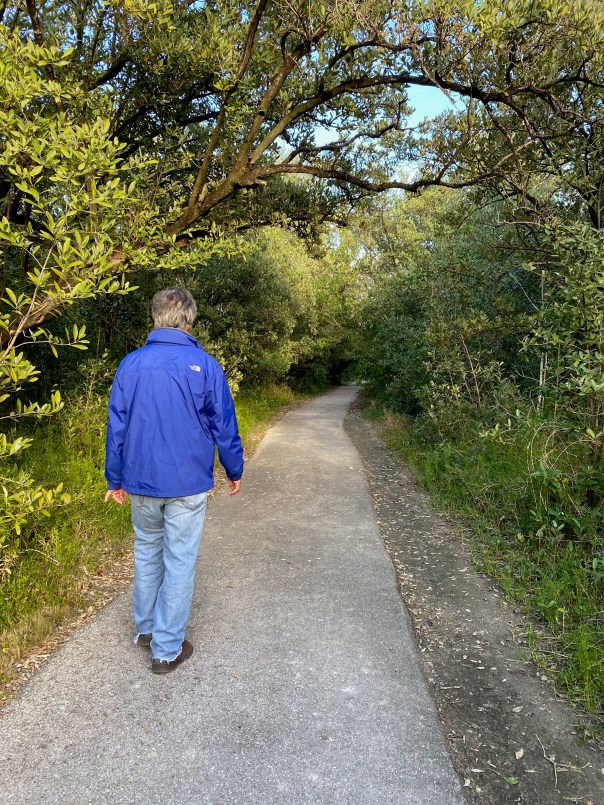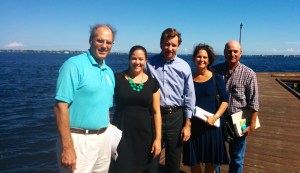 My primary 2021 New Year’s resolution was to write more, however my angst over our country’s political, social unrest and the worsening Covid-19 epidemic has caused me to experience “writer’s block.” Nonetheless, today I will try to get going with my resolution.
My primary 2021 New Year’s resolution was to write more, however my angst over our country’s political, social unrest and the worsening Covid-19 epidemic has caused me to experience “writer’s block.” Nonetheless, today I will try to get going with my resolution.
On January 9th, 2021, my husband, Ed, looked at me, “I’ve got a few days off; do you want to stick around Stuart or do you want to go somewhere?”
“Hmmm? Let’s go as far away as one can go, Flamingo.” I replied.
“Flamingo?” Ed looked like he wasn’t quite sure…
“Yes, Flamingo, at the very southern tip of Florida.”
-Flamingo lies in Monroe County, inside the boundary of Everglades National Park (ENP)
The following day, Ed and I packed up and drove from Stuart to Lake Okeechobee taking Highway 27 south until we arrived in Florida City, just south of Homestead. Next, we drove about an hour along the historic Ingram Highway. It was a beautiful drive – like going into Florida’s past with marl prairies, slash pines, and tremendous bird life.

 About forty miles later, we finally arrived in Flamingo. Now a ghost town, Flamingo was once the home of the American Flamingo -thus the name. Although these spectacular long legged, pink birds were all killed for their spectacular feathers a over a century ago, today there have been reports of a few returning. Most of us are familiar with the story of Guy Bradley, the first Audubon warden hired to protect Everglades wading birds from poachers. This is his land.
About forty miles later, we finally arrived in Flamingo. Now a ghost town, Flamingo was once the home of the American Flamingo -thus the name. Although these spectacular long legged, pink birds were all killed for their spectacular feathers a over a century ago, today there have been reports of a few returning. Most of us are familiar with the story of Guy Bradley, the first Audubon warden hired to protect Everglades wading birds from poachers. This is his land.
Back in the early1900s when Bradley was trying to protect the birds, Flamingo, as all of South Florida, was thoughtlessly being sliced and diced with canals. Today, one can see this most pronounced at the Flamingo Welcome Center along the Flamingo, more modernly called the Buttonwood Canal. Here lies a “plug” between Florida Bay and the mosaic of fresher/fresh waters in and near Flamingo.
According to our ENP tour guide, Mr Nick, this “Flamingo” or “Buttonwood Canal” was dug by Henry Flagler in the early 1900s and later abandoned when Flagler realized the canal failed to drain the land – instead, due to the tides and topography of the area, bringing too much salt water from Florida Bay. A cement plug was later placed to ward off this saltwater intrusion.
I was pleased to see that a family of Ospreys had built their nest right on this plug in the midst of much human activity! The female osprey was hard at work, peeking over the side, protecting and incubating her eggs while the male intermittently delivered fish. The large birds appeared absolutely unaffected by people! 
FLAMINGO or BUTTONWOOD CANAL -Salt water, Florida Bay side of plug -Below: brackish/fresher water on estuary/marsh side of plug leading to Coot Bay (Coots no longer come in droves as the water is still too salty.)
-Below: brackish/fresher water on estuary/marsh side of plug leading to Coot Bay (Coots no longer come in droves as the water is still too salty.) -The cement plug cutting off salt water of Florida Bay from canal, note osprey nest!
-The cement plug cutting off salt water of Florida Bay from canal, note osprey nest! 
 -Our ENP guide, Nick
-Our ENP guide, Nick The first day Ed and I took a tour and Mr. Nick was our guide. The second day, we rented a Mako flats boat and followed the same path ourselves. We learned so much. It was incredible. While Ed looked for places to fish, I searched for the Shark River. The Shark River is one of many that extends out from Shark River Slough, the remaining ridge and slough, “river of grass,” of the Everglades. Some of its waters lead to Florida Bay. Taylor Slough, on the other hand, has shamelessly been cut off by development.
The first day Ed and I took a tour and Mr. Nick was our guide. The second day, we rented a Mako flats boat and followed the same path ourselves. We learned so much. It was incredible. While Ed looked for places to fish, I searched for the Shark River. The Shark River is one of many that extends out from Shark River Slough, the remaining ridge and slough, “river of grass,” of the Everglades. Some of its waters lead to Florida Bay. Taylor Slough, on the other hand, has shamelessly been cut off by development. 
Flamingo Canal was full of wildlife: wading birds, manatees, and by far the most interesting, crocodiles, of which I had never seen. These southern waters of Florida are one of the only places on Earth where both Alligators and Crocodiles live together. This canal is so salty the crocs have the edge. Our tour led from Flamingo Canal, to Coot Bay, to yet another canal, and then into Whitewater Bay. This track is referred to as the “Wilderness Waterway.” (See map below.)
–American crocodile, an endangered species
 -The most prevalent wading bird by far was the tri-colored heron-There were many baby crocodiles along the Flamingo Canal warming in the sun. It was 37 degrees in the morning of our second day at ENP!
-The most prevalent wading bird by far was the tri-colored heron-There were many baby crocodiles along the Flamingo Canal warming in the sun. It was 37 degrees in the morning of our second day at ENP! 
 -Because of the plug, manatees must enter the protection of the Flamingo Canal by swimming into the rivers entering Florida Bay that lead eventually into Whitewater Bay! A very long journey. 20 miles?
-Because of the plug, manatees must enter the protection of the Flamingo Canal by swimming into the rivers entering Florida Bay that lead eventually into Whitewater Bay! A very long journey. 20 miles?  -Our tour guide, Nick, called this tree along the Flamingo Canal the “perfect mangrove.”
-Our tour guide, Nick, called this tree along the Flamingo Canal the “perfect mangrove.”  -Flamingo/Buttonwood Canal opening to Coot Bay
-Flamingo/Buttonwood Canal opening to Coot Bay
 -Entering Whitewater Bay on a cold day!
-Entering Whitewater Bay on a cold day! It is very hard to explain how gigantic this area is! Over ten miles long and more than half that wide. Irregular in shape. It was truly “liquid land,” with mangrove forests everywhere and smaller even more beautiful mangrove islands dotting the horizon. One thing was for sure, it would be very easy to lose one’s sense of direction and get lost in Whitewater Bay. No thank you!
It is very hard to explain how gigantic this area is! Over ten miles long and more than half that wide. Irregular in shape. It was truly “liquid land,” with mangrove forests everywhere and smaller even more beautiful mangrove islands dotting the horizon. One thing was for sure, it would be very easy to lose one’s sense of direction and get lost in Whitewater Bay. No thank you!
Ed and I spent hours tooling around but never made it to the Shark River as access is limited. Nonetheless, I got a much better idea of the lay of the land for sending water south. I am hoping Ed and I can one day return in a canoe.
I was happy to go as far away as one can go-FLAMINGO! -Learning about a Florida I did not know- Whitewater Bay islands of Flamingo
-Learning about a Florida I did not know- Whitewater Bay islands of Flamingo -Ed practices casting
-Ed practices casting -Islands within Whitewater Bay; all of Florida must once have looked this way!
-Islands within Whitewater Bay; all of Florida must once have looked this way!


 -Back on Land: A Walk down the Guy Bradley Trail
-Back on Land: A Walk down the Guy Bradley Trail -Ed watches a fisherman cast in Florida Bay
-Ed watches a fisherman cast in Florida Bay -Moonvine once covered the southern rim of Lake O’s pond apple forest, now gone.
-Moonvine once covered the southern rim of Lake O’s pond apple forest, now gone. -Ed poses with a giant Buttonwood tree
-Ed poses with a giant Buttonwood tree -Morning Glory. Is there a more gorgeous flower?
-Morning Glory. Is there a more gorgeous flower? -Guy Bradley Trail and an end to a wonderful day!
-Guy Bradley Trail and an end to a wonderful day!

VIDEOS: 1. FLAMINGO/BUTTONWOOD CANAL; 2. MANATEES; 3. CROCODILE






















